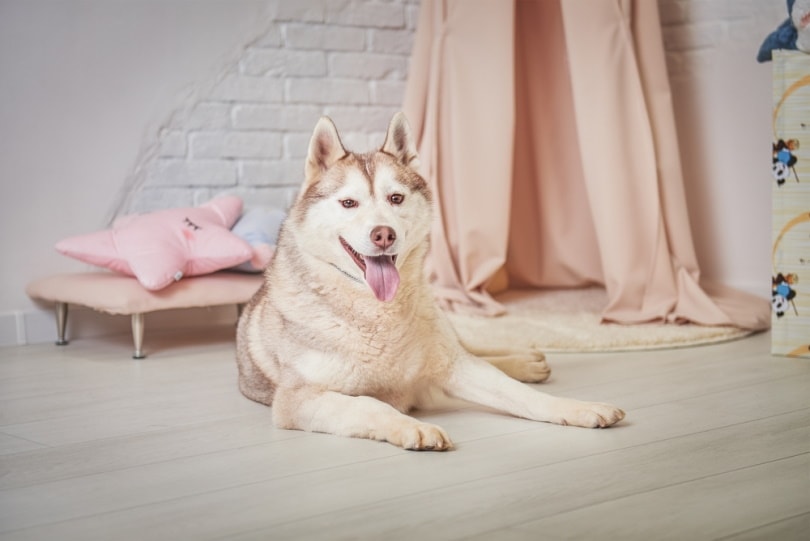How to Calm a Restless Dog at Night: 13 Great Ideas

Updated on
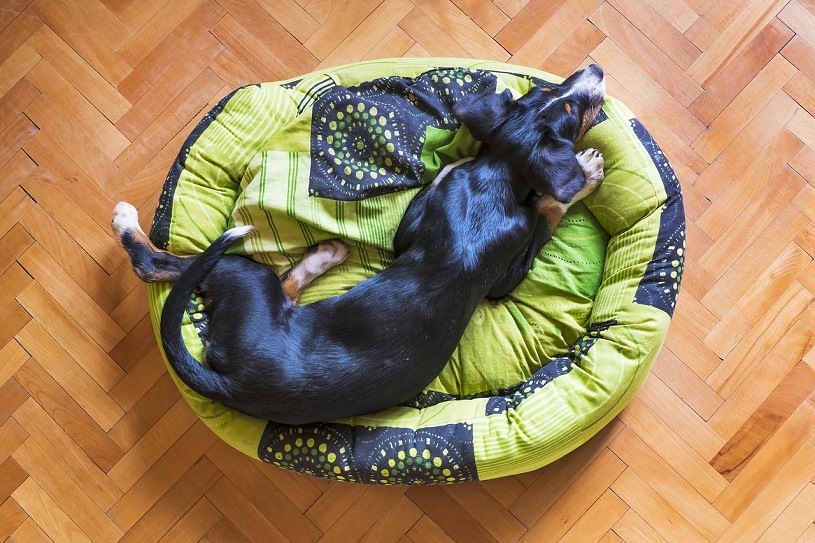
For most dogs sleeping is as welcome as playing, and they all have their favorite places and positions to drift off. But sometimes dogs can’t settle down at night. Whilst the occasional restless night is as normal for dogs as it is for humans, regular or frequent insomnia can be more serious. As loving and committed dog owners, dealing with minor inconveniences and interrupted routines are part of the deal we make to have loving companions by our sides.
Some pets just can’t relax. They may periodically or continuously keep trying to jump on the bed or wander around and get into mischief. As a best friend, it’s up to us to find out why our dogs are fussy and help them to sleep better. We can do this by looking for the different causes of restless nighttime behavior. The reasons a dog may be agitated at night are usually related to their routine, environment, health, anxiety, or age.
There are many things you can do to help calm your dog to make sure you both get a good night’s rest. In this article, we are going to explore some great ideas on how you can calm your restless dog at night.
The 13 Ways You Can Calm Your Dog at Night
1. Exercise Your Dog by Day for a Quiet Night
Exercise is known to have a calming effect on dogs. By exercising your dog during the day, you can help to keep your dog more tranquil at night. This is because exercise helps to release pent-up energy and reduces stress levels. If your dog goes to bed full of energy then it is very likely that they will be unsettled during the night. Exercise can help to tire your dog out so they are less likely to experience nighttime restlessness. So, if you want your dog to sleep soundly at night, make sure to provide them with adequate exercise during the day.

2. Daytime Play Releases Endorphins
Encouraging your dog to play with toys will give your dog an opportunity to release endorphins. These feel-good chemicals produce a natural high and after a fun time playing with their toys dogs will feel a sense of calm and relaxation, and their anxiety and stress levels will decrease as a result. A happy, relaxed dog is going to be calmer at night. When choosing toys for your dog to play with you can choose a puzzle toy like the Kong Wobbler Dog Toy that will sustain their interest through small rewards for their effort.
3. Socialize and Make Physical Contact With Your Dog
Another way of increasing your dog’s comfort and reducing their stress and anxiety is by taking the time during the day to spend some quality social time with your dog. The majority of dogs adore physical touch, especially from their owners. It makes them feel loved and strengthens the bond between you and your dog. If you don’t have time to play together during the day, rather than playing with your dog shortly before bedtime and riling them up—a sure way to have a restless dog—spend time petting, stroking, and massaging them. This will put your dog in a calm and happy mood, which is the perfect state before going to bed.
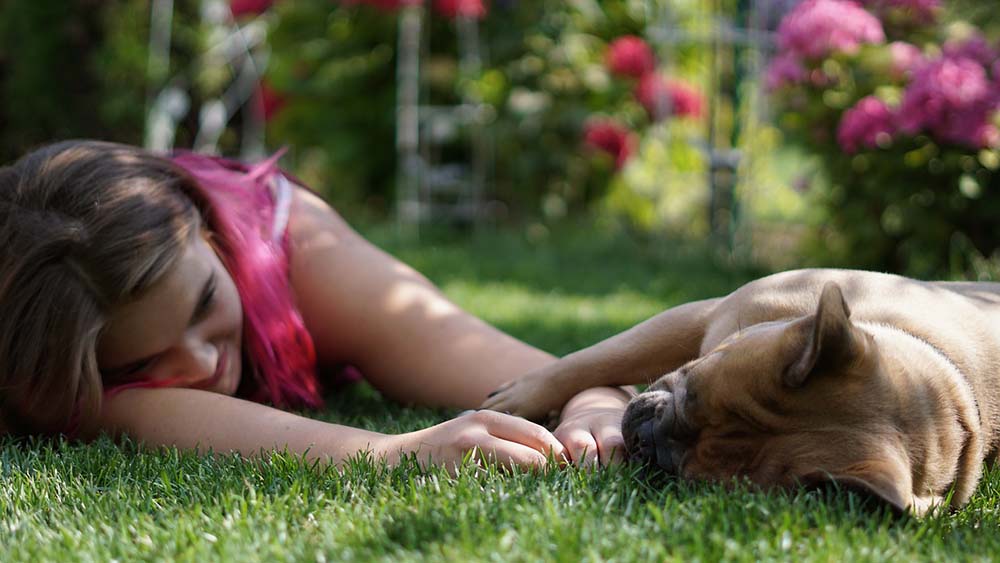
4. Don’t Eat Right Before Bed
Like humans, dogs that eat close to bedtime may have difficulty sleeping through the night since their digestive system is full of undigested food. This can lead to restless nights for both you and your dog. You can avoid this by establishing regular feeding times earlier in the day which will help your dog digest its food and be calmer at night.
5. Allow Them to Go Potty Before Bed!
Not surprisingly if you put your dog to bed with a full bladder then at some point, they are going to have to take care of business. If your dog is restless at night it could be because they haven’t had a pee recently. Ideally one of the last things to do before putting your dog to bed is to get them to relieve themselves. It may mean taking them for a short walk or putting them out in the yard for five minutes.

6. Make Bedtime a Treat
You could give your dog a small treat before going to bed every night and this will establish the connection between going to bed and something nice happening. By giving your dog the treat in their bed and then putting them down to sleep afterward, your dog will be eager to go to their bed on time and get their treat.
7. Combine It All into a Daily Routine
A well-established routine helps a dog know what they should be doing and when they should be doing it. By combining all of the above ideas and doing them in a set order and at specific times you will create a set routine for your dog. Having a routine will reduce any anxiety your dog may have, making them calmer and happier, both of which are good for preventing your dog from being restless at night.
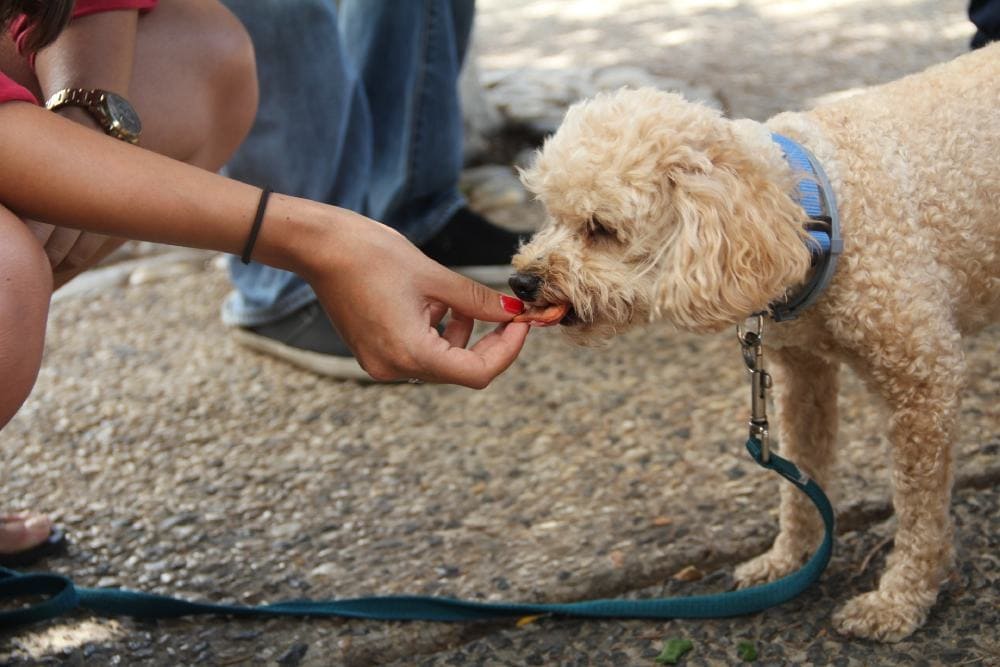
8. Get a Comfortable Bed
Dogs, like humans, are diurnal animals, meaning that they are most active during the day and rest during the night. At night, they require a comfortable place to sleep in order to maintain their normal sleep cycles. Without a comfortable bed, dogs may become restless and anxious, which can lead to poor sleep and increased stress levels. A calm dog is a happy dog, so it’s important to provide your dog with a cozy spot to sleep.
9. Remove Crate Anxiety
If you crate your dog at night this might be the cause of restlessness. Crate anxiety is a condition that can afflict dogs who are confined to small spaces, like crates, for long periods of time. The anxiety is caused by the dog’s perception of being trapped and unable to escape. This can make them restless at night, as they try to find a way to escape the crate. If this is the case and you want to keep them crated, then you must first look to make the environment as comfortable as possible, and then you may need to train them to get used to being locked up in a crate.
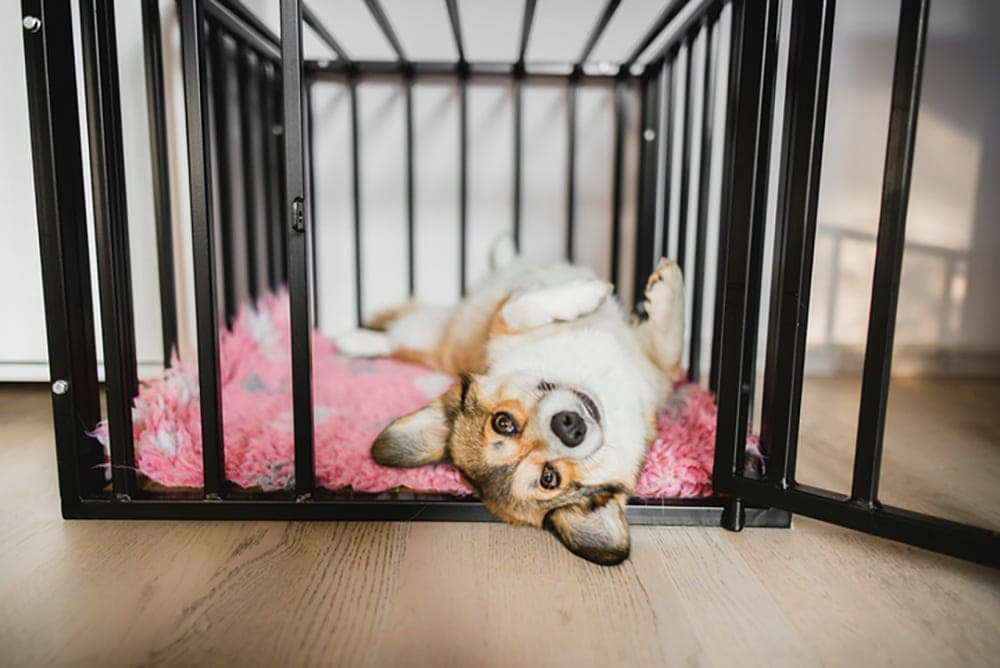
10. Keep the Environment Quiet
Dogs have very sensitive hearing and can hear sounds that the human ear can’t detect. If your dog is awake at night, restless, pacing, or whining and you can’t find a reason, maybe it is because there is a background noise they are picking up on that is either making them anxious or inquisitive. You might have nocturnal visitors outside, such as wild animals snooping around your property looking for a meal. Or maybe you have some unwanted house guests living under your roof or deck. If wild animals are disturbing your dog then you will want to either have them removed or find ways to discourage them from visiting your property.
There may be other noises—especially in an urban environment—that you can’t do anything about that are disturbing your dog. In this case, you could try creating white noise either by using a fan, playing soft music, or buying a dedicated white noise machine.
11. Make Your Dog Feel Safe
Where your dog sleeps is very important to how safe your dog feels. The room the dog sleeps in, the distance from you, and the dog’s surroundings can all affect how secure your dog feels. If your dog has separation anxiety then they probably won’t feel safe in their bed, and they are not going to feel comfortable shutting their eyes and going to sleep. If your dog sleeps in a room far from your bedroom, try moving your dog into a closer room, or even into the room with you.
Being closer to you will make your dog less anxious. Of course, when you move your dog make sure you are still following all the other guidelines in this article.
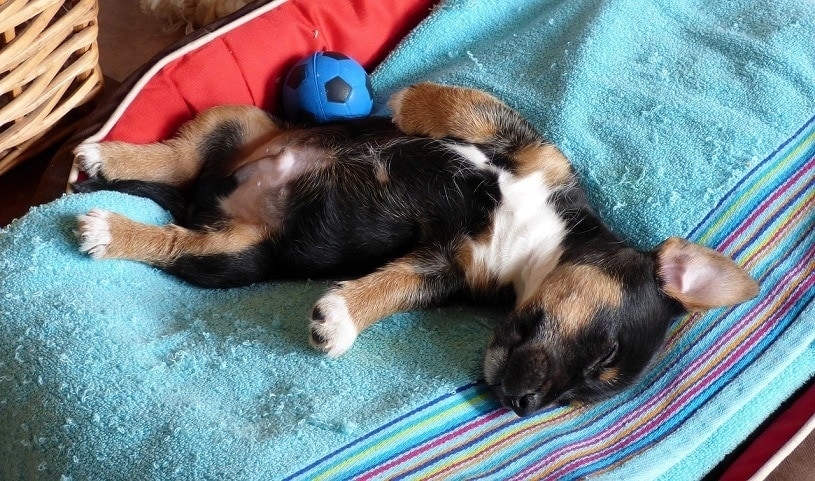
12. Calming Pheromones
Dog pheromones are airborne chemicals that are naturally released by dogs for other dogs and are odorless and undetectable to humans. Many species give off pheromones, but in general, they can only be detected by the same species. Like their other senses, dogs have very powerful receptors for detecting pheromones. Dogs use pheromones to transmit messages and feelings to other dogs. Nursing dogs release a pheromone that signals to dogs that they are safe. This pheromone, known as Dog Appeasing Pheromone (DAP) has been isolated and reproduced synthetically.
In some situations when a dog detects DAP they may feel comforted. Synthetic DAP is also available in a number of different forms for dog owners to try.
13. If in Doubt Speak to Your Vet
If none of these ideas help you and your dog then you should probably consult your vet. There are many conditions that could be affecting your dog that a vet may be able to diagnose. The potential undiagnosed causes of your pet’s restlessness could be some form of chronic pain, undiagnosed illness, anxiety, old age, or even medications that your dog is currently taking. It is important that you and your vet get to the bottom of the problem and diagnose the root cause swiftly to alleviate your dog’s stress and suffering.
We have touched upon some simple dog anxieties in the tips above, but your vet will understand the full range of anxieties that your dog may be experiencing and will be able to home in on what in their environment, routine, experience, or history that may be the source of your dog’s issues. As dogs get older, they become less active and may start sleeping in the daytime causing them to sleep less at night, or they may be suffering from an ailment caused by age. Your vet may have suggestions on how you can make life easier or more comfortable for your aging pet.

Final Thoughts
There are many reasons your dog may be restless at night and with a little investigation and effort, you should be able to identify what might be the root cause. Most likely the problem lies either in your dog’s routine and habits, their sleeping environment, or some physical issue. You can experiment with these ideas to try and calm your restless dog. If your dog’s problem is more complicated or serious you should consult a vet for help.
Featured Image Credit: mattycoulton, Pixabay


